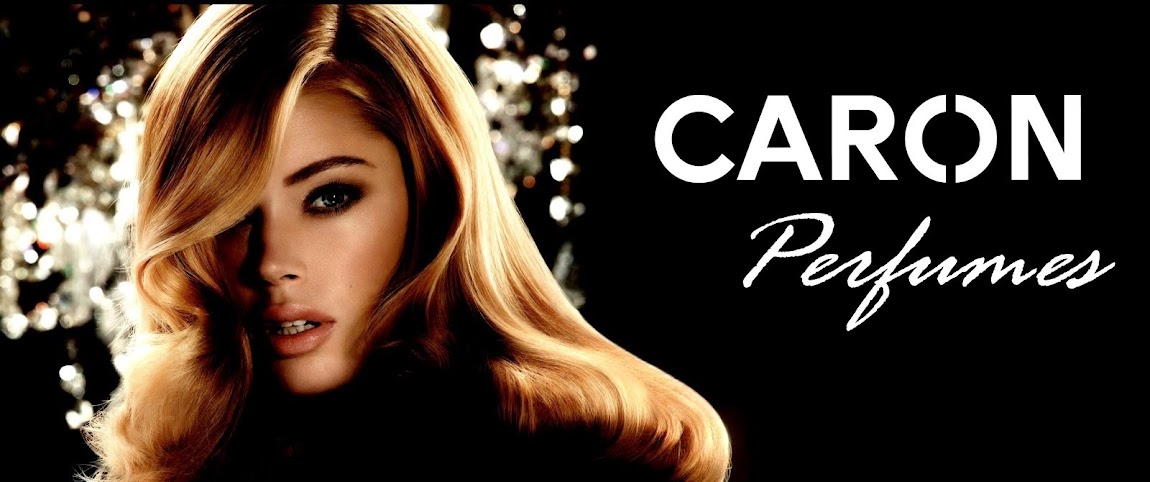In the early years of the turn of the century, Ernest Daltroff, was beginning to get fascinated by scent and fragrance creation. So in 1903, Daltroff purchased a perfumery in Asnieres called Parfumerie Emilia, a northwestern suburb of Paris, Daltroff's first perfume was named Royal Emilia, after the shop. His business was such a success that he purchased another small perfumery and haberdashery store from Anna-Marie Caron, called the Magasin Caron at 10 rue de la Paix, in the fashionable heart of Paris and renamed it Parfumerie Caron. He liked the name and decided it would be easy for his customers to pronounce in any language and remember as well as looking good on packaging. The perfume Royal Emilia was renamed Royal Caron in 1904..
As the clientele grew, he took on a partner, Felicie Vanpouille, a young dressmaker, and Daltroff's lover. She was made the artistic director of the company and was responsible for design and packaging. Many of the perfume flacons used by Caron were designed by Felicie, such as Chantecler, Royal Emilia, and others. But her best known design was for the bottle of Narcisse Noir. This bottle was so popular that it was being copied by other companies for their own versions of Narcisse perfumes.
The firm continued to prosper and exported perfumes to the United States, South America, England. In 1922, Ernest gave Felicie half of the company. They opened a branch in 1923 in New York to satisfy their American cliente. Subsequently the firm expanded in the years between the wars and was awarded the Legion d'Honneur by the French Government for its outstanding economic achievements.
The Spur, 1923:
"Of unusual beauty and appropriateness is the flacon for Nuit de Noel, the latest creation of Caron - black crystal, exquisitely cut and simply decorated with a gold band. The box of jade green art- paper, with its attractive design and long green silk tassel and gold lining, is in harmony. For the Narcisse Noir extracts, low circular crystal bottles are used, their beauty emphasized by the circular case of black satin, lined with green. In addition to the two bottles of extract, these coffret sets include a small case of face powder. The buff box, in which the bottles of N'Aimez Que Moi come, have a painted cover and a long tassel. The flacon itself is narrow and flat, with a stopper of generous size. The handsomely decorated bottles of Le Tabac Blond are in gold cases, which open like a book with a long tassel."
The Pharmaceutical Era, 1924:
"Caron Corporation. When Caron captured the elusive odor of the narcissus bloom at night and transformed it into a liquid perfume, the company's experts accomplished a feat that had tempted and disheartened chemists for generations. The narcissus has a different odor by night than it has by day, the night odor being heavier and more penetrating. Caron, being the first to make successfully a reproduction of the night blooming narcissus, the firm put most of its energies in this odor and its lines and has featured it from the start. Narcisse Noir is acknowledged even by competitors to be one of the big successes of modern perfumery. Narcisse Blanc is the companion perfume to Narcisse Noir. N'Aimez Que Moi (love only me) is the next popular brand in the Caron lines, with Tabac Blond in close pursuit. Another big Caron success was introduced last Christmas. It is Nuit de Noel (Christmas Eve). This perfume comes in a black bottle, an original idea in the perfumery trade which caught the public fancy. South America has also proven a fertile field for the Caron products introduced there in 1909. Tabac Blond seems to appeal to the South Americans, and this brand sells almost as well there as Narcisse Noir. The Caron company was established in France in 1900, with importations starting to America with the first output of the factory. The firm was incorporated in America last year. FN Carpenter is general manager of the American business."
Ernest fled to the United States two years before the start of World War II, he died in 1941. Caron perfumes were unavailable for exportation to the United States during the war and did not resume shipments until 1947.
Felicie later remarried and her new name was Felicie Bergaud, she continued to run the firm until she sold it in 1962 to Parfums Revillon. In 1967, the Parfums Caron company was taken over by US pharmaceutical company AH Robins International.
In 1987, G.E.R. Stiles, AH Robins' senior vice president for finance, said Parfums Caron stopped operating profitably for at least three years prior. The A.H. Robins Co. received permission from U.S. Bankruptcy Court Judge Blackwell N. Shelley to sell its French perfume subsidiary, Parfums Caron, for $18.3 million. Papers filed with the court showed that in the fiscal year that ended Nov. 30, Parfums Caron's loss was 6.3 percent of its sales. At 1987 exchange rates, it had about $20.6 million in sales and a loss of about $1.3 million.
Parfums Caron was a subsidiary of A.H. Robins International, which was a subsidiary of A.H. Robins Co., a Richmond-based pharmaceutical firm. The parent firm had been under Chapter 11 reorganization since August 1985. The buyer for Parfums Caron was Revillon Luxe SA, a Paris- based luxury goods marketer.
In 1998, Caron was taken over by one of the last perfume creators, Patric Ales. Succeeded by Romain Ales, the brand continues its rich tradition of excellence and luxury.






No comments:
Post a Comment